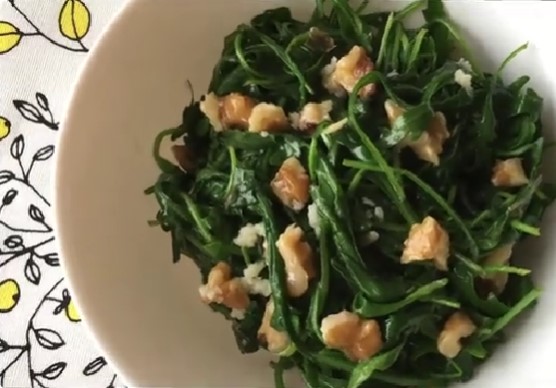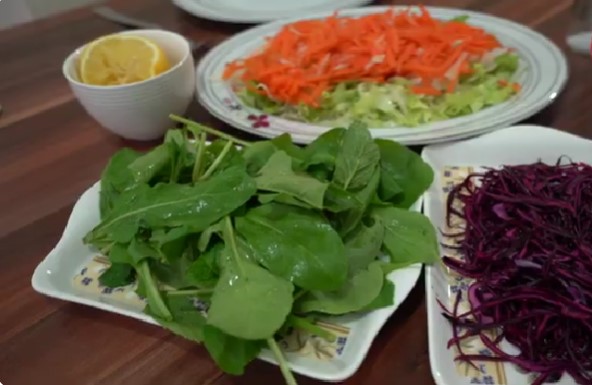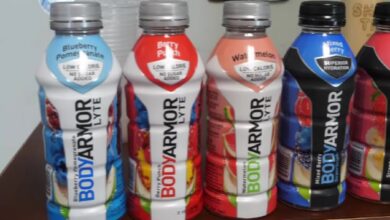Salad Nutrition Facts
Salads are a popular and versatile choice for those seeking a nutritious meal. They can be customized to fit various dietary preferences and needs, offering a myriad of health benefits. Whether you’re aiming for a light side dish or a hearty main course, salads can be tailored to provide essential nutrients while keeping calorie intake in check. This article will delve into the nutritional facts of salads, explaining how different ingredients contribute to your overall health.

Nutritional Benefits of Salads
Salads are often packed with vitamins, minerals, and other essential nutrients, especially when they include a variety of vegetables, fruits, and other wholesome ingredients.
Vitamins and Minerals
- Vitamin C: Found in many salad ingredients such as bell peppers, tomatoes, and citrus fruits, vitamin C is crucial for immune function and skin health.
- Vitamin K: Leafy greens like kale, spinach, and arugula are rich in vitamin K, important for blood clotting and bone health.
- Folate (Vitamin B9): This vitamin is vital for cell growth and metabolism, commonly found in greens like spinach and romaine lettuce.
- Potassium: Avocados, tomatoes, and spinach are excellent sources of potassium, which helps regulate fluid balance and nerve signals.
Fiber
Fiber is essential for digestive health and can help prevent chronic diseases. Vegetables, fruits, beans, and whole grains commonly found in salads are excellent sources of dietary fiber.
Antioxidants
Antioxidants help protect your cells from damage. Ingredients like tomatoes, carrots, berries, and nuts are rich in antioxidants such as beta-carotene, lycopene, and vitamin E.
Common Salad Ingredients and Their Nutritional Values
Leafy Greens
- Spinach: High in vitamins A, C, and K, as well as folate and iron.
- Kale: Packed with vitamins A, K, and C, along with calcium and fiber.
- Arugula: Rich in vitamins A, C, and K, and provides a peppery flavor.
Vegetables
- Bell Peppers: Excellent source of vitamins A and C.
- Carrots: High in beta-carotene, fiber, vitamin K1, and potassium.
- Cucumbers: Low in calories and provide hydration and vitamins K and C.
Proteins
- Chicken: Provides lean protein and essential amino acids.
- Beans: Offer plant-based protein, fiber, and a variety of vitamins and minerals.
- Nuts and Seeds: High in healthy fats, protein, and essential nutrients like magnesium and vitamin E.
Fruits
- Berries: Rich in antioxidants, vitamins, and fiber.
- Avocado: High in healthy fats, fiber, and various vitamins and minerals.
Salad Dressings and Their Impact
While salads can be very nutritious, the choice of dressing can significantly impact their healthiness.
High-Fat Dressings
- Ranch and Caesar Dressings: Often high in saturated fats and calories. One serving of ranch dressing can contain up to 11 grams of fat.
- Cheese-Based Dressings: These can add substantial calories and fats to your salad.
Healthier Options
- Vinaigrettes: Made with olive oil and vinegar, these can be a healthier alternative, providing beneficial fats without excessive calories.
- Yogurt-Based Dressings: These can offer a creamy texture with lower fat content.
Homemade Dressings
Making your own dressing allows you to control the ingredients and avoid added sugars and unhealthy fats.

Frequently Asked Questions
What are the most nutritious ingredients to include in a salad?
Including a variety of colorful vegetables, leafy greens, fruits, nuts, and seeds can maximize the nutritional value of your salad. Adding lean proteins like chicken or beans can also enhance its nutritional profile.
Are all salads low in calories?
Not necessarily. While many salads can be low in calories, the addition of high-calorie ingredients like cheese, nuts, and creamy dressings can increase the calorie count. Choosing low-calorie, nutrient-dense ingredients can help keep your salad healthy.
Can salads provide enough protein for a meal?
Yes, by adding protein-rich ingredients like chicken, beans, tofu, or nuts, a salad can provide adequate protein to serve as a complete meal.
How can I make my salad more filling?
Including a mix of proteins, healthy fats, and fiber-rich vegetables can make your salad more satisfying. Ingredients like avocados, beans, nuts, and whole grains can help you feel fuller for longer.
Are raw vegetables better than cooked vegetables in salads?
Both raw and cooked vegetables have their benefits. Raw vegetables retain more water-soluble vitamins like vitamin C, while cooking can enhance the availability of some nutrients like lycopene in tomatoes. Including a mix of both can provide a balanced nutrient profile.
Read also: Salad and Go Nutrition Facts





